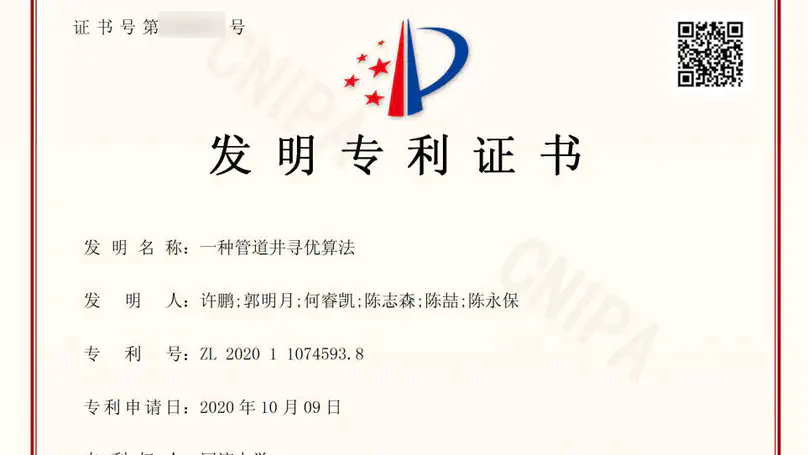Biography
Mingyue Guo is a Ph.D. student in Department of Mechanical Engineering, Texas A&M University BUILDING ENERGY AND HVAC&R RESEARCH GROUP.
She receieved a master’s degree in HVAC&R from Tongji University.The topic of her thesis for the master’s degree is “Hybrid energy consumption prediction model for office buildings based on multi-source heterogeneous data”. Her advisor is Prof. Peng Xu.
She obtained a bachelor’s degree in the built environment from Chongqing University. The topic of her thesis for the bachelor’s degree is “Preliminary Study on the automatic design of HVAC system based on BIM”. The advisors are Prof. Nan Li and Peng Xu.
She is innovative, cooperative, industrious, committed, and optimistic.
Download my resumé.
- Building energy modelling
- Building information modelling
- Data analytics
-
MEng in HVAC & R, 2019-2022
Tongji University
-
BEng in Built Environment, 2015-2019
Chongqing University
Skills
Python, C#, C; gbXML, Revit SDK
EnergyPlus, Fluent, Dymola
AutoCAD, Revit, Sketchup, Navisworks, Grasshopper
Education and Professional Experience
including honors and rewards
Position:
- Graduation Assistantship - Research
Honor and reward:
- 2022, Outstanding Graduate of Shanghai Municipality 1%
- 2021, outstanding student of TongJi University
- 2021, China National Scholarship, Chinese Government 1%
- 2020, Yada Scholarship, Department of Mechanical and Energy Engineering, Tongji University
Honors and rewards include(selected):
- 2019, Outstanding Graduate of Chongqing Municipality 1%
- 2018, “Strive for Excellence” excellent individual, Chongqing University 5%
- 2018, National Encouragement Scholarship, Chongqing University 5%
- 2017, National Encouragement Scholarship, Chongqing University 5%
- 2017, Outstanding Student, Chongqing University 5%
News
Projects
including research and engineering projects
Featured Publications

Various organizations and societies around the globe have issued guidelines in response to the coronavirus disease (COVID-19) and virus (SARS-CoV-2). In this paper, heating, ventilating, and air-conditioning-related guidelines or documents in several major countries and regions have been reviewed and compared, including those issued by the American Society of Heating Refrigerating and Air-Conditioning Engineers, the Federation of European Heating, Ventilation, and Air Conditioning Associations, the Society of Heating, Air-Conditioning and Sanitary Engineers of Japan, Architectural Society of China, and the Chinese Institute of Refrigeration. Most terms and suggestions in these guidelines are consistent with each other, although there are some conflicting details, reflecting the underlying uncertainty surrounding the transmission mechanism and characteristics of COVID-19 in buildings. All guidelines emphasize the importance of ventilation, but the specific ventilation rate that can eliminate the risk of transmission of airborne particulate matter has not been established. The most important countermeasure, commonly agreed countermeasures, the conflicting content from different guidelines, and further work have been summarized in this paper.

The difficulty in balancing energy supply and demand is increasing due to the growth of diversified and flexible building energy resources, particularly the rapid development of intermittent renewable energy being added into the power grid. The accuracy of building energy consumption prediction is of top priority for the electricity market management to ensure grid safety and reduce financial risks. The accuracy and speed of load prediction are fundamental prerequisites for different objectives such as long-term planning and short-term optimization of energy systems in buildings and the power grid. The past few decades have seen the impressive development of time series load forecasting models focusing on different domains and objectives. This paper presents an in-depth review and discussion of building energy prediction models. Three widely used prediction approaches, namely, building physical energy models (i.e., white box), data-driven models (i.e., black box), and hybrid models (i.e., grey box), were classified and introduced. The principles, advantages, limitations, and practical applications of each model were investigated. Based on this review, the research priorities and future directions in the domain of building energy prediction are highlighted. The conclusions drawn in this review could guide the future development of building energy prediction, and therefore facilitate the energy management and efficiency of buildings.
Publication in Chinese

一种管道井寻优算法,涉及建筑设计及机电设计领域;特征是,从建筑信息模型中提取房间信息及管道井可能位置,结合机电设计中末端设备布置位置,基于图论和最小生成树思想,采用普里姆算法自动求解每个管道井可能位置作为起点到各个末端的最短路径管路,并计算各个求解得到的最短路径管路的阻力和系统不平衡度,选取系统不平衡度15%内的管道阻力最小的管道井作为最优管道井位置。实现系统管道布置简单、系统平衡性好、阻力减小、运行节能等综合性最优设计。

公开了一种用于火锅店的燃气灶烟气热回收装置,它包括燃烧腔(1)、烟道(2)、容积式换热器(4)和吸式风机(5),燃烧腔1的排气孔连通烟道(2),烟道(2)接入容积式换热器(4)的高温流体入口,容积式换热器(4)的高温流体出口连接吸式风机(5);冷水从容积式换热器(4)的低温流体入口流入,冷水换热后从容积式换热器(4)的低温流体出口流出。本实用新型减小了余热回收装置的体积、提高了热回收率;改善火锅店的室内环境,降低了火锅店夏季的空调能耗。

为应对新冠肺炎(COVID-19)和新型冠状病毒(SARS-CoV-2) ,不同机构、学会发布了相关指南。对国内外主要的暖通相关指南或文件进行了解读和对比。包括美国供暖制冷与空调工程师学会ASHRAE、欧洲供暖通风和空调协会联盟REHVA、日本空气调和·卫生工学会及中国建筑学会、中国制冷学会等发布的文件和指南中关于病毒传播机制和暖通空调系统运行建议的部分,以及英国设备工程师协会CIBSE、德国室内通风技术协会RLT根据REHVA指南做出的回应。

BIM向BEM转换软件采用模块化设计,包含四个主要模块(如图1,黄色部分表示模块,绿色部分表中间文件)。软件整体的输入模型为Revit中rvt项目文件(BIM),输出文件为常用的能耗模拟软件EnergyPlus(e+)的输入文件IDF(BEM)。模块一:BIM checker在Revit的环境中运行,对原始的BIM模型进行简化、修改和填补信息,并将BIM转换为中间格式gbXML(Green Building XML)。模块二:gbXML editor将BIM直接转换的存在信息不规范的gbXML进行修改,输出修改后的gbXML。模块三:data converter将修改后的gbXML进行数据格式转换,输出能耗模拟引擎EnergyPlus的支持的格式IDF(Input Data File)。模块四:IDF checker将转换得到的IDF根据国家现行规范进行修改和补充,输出可直接用于能耗分析的IDF文件。




